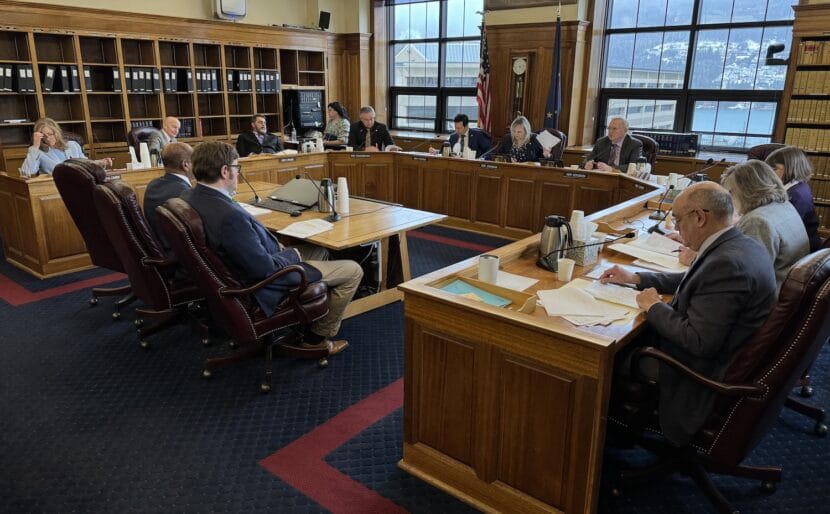
The amount of this year’s Permanent Fund dividend and the amount of state funding for public schools remained undecided Tuesday as the Alaska House Finance Committee unveiled the first draft of its proposed state operating budget.
“I would note that these committee substitutes represent a starting point,” said Rep. DeLena Johnson, R-Palmer and co-chair of the House Finance Committee, “and that we will have a more complete budget picture with the release of the spring revenue forecast.”
That is scheduled to happen on Wednesday.
The forecast, which estimates — among other things — the price and amount of North Slope crude oil in the coming year, will allow legislators to finalize their draft budget.
Last year, the House Finance Committee finished a draft budget before the new forecast, only to see a balanced budget turn into a deficit document when updated figures were released.
This year, the finance committee is waiting for the most updated figures before setting a Permanent Fund dividend and making amendments to their first draft. The budget will cover the 12 months beginning in July.
Members of the House said earlier this month that they don’t intend to spend from the state’s savings accounts to pay for the budget, including the dividend, and Tuesday’s draft follows that intent.
“My goal this year is to give each expenditure a hard look, make smart reductions to ensure Alaskans get the most bang for their buck, fund essential services and the largest possible PFD, and — God willing — leave some money for a capital budget,” Johnson said.
Tuesday’s draft, which includes recommendations from budget subcommittees, doesn’t show major additions or subtractions from last year’s budget or the draft proposed by Gov. Mike Dunleavy earlier in December.
When state lawmakers adjourned in May 2023, they planned to spend $4.48 billion on state agencies. Dunleavy subsequently vetoed some of that amount. The budget unveiled by the House Finance Committee on Tuesday would spend $4.35 billion on state agencies in the fiscal year that starts July 1.
Neither figure includes the amount spent on the Permanent Fund dividend, and the newly released budget tally doesn’t include the education funding increase included in Senate Bill 140, which lawmakers approved by wide margins earlier this year. Paying the increase is expected to cost an additional $246 million.
Gov. Mike Dunleavy must decide by Thursday whether to veto SB 140 or allow it to become law. If he allows it to become law, he could later reduce school funding with his line-item veto powers.
During a brief public testimony session Tuesday afternoon, Dana Mock of the Delta/Greely School District said he has 333 students enrolled in a correspondence program that has one teacher.
“My fingers are crossed, my legs are crossed, I’m praying that we’re going to get this through,” he said of the funding increase.
